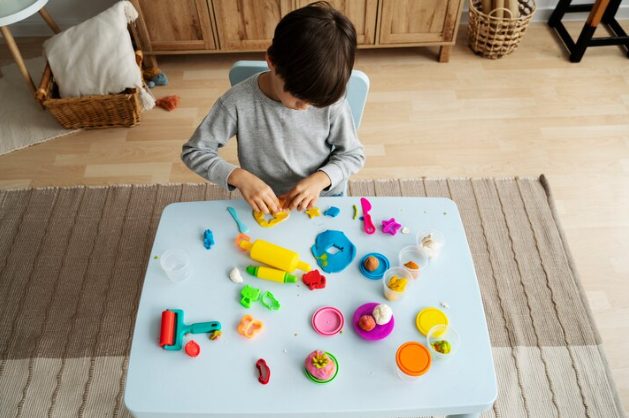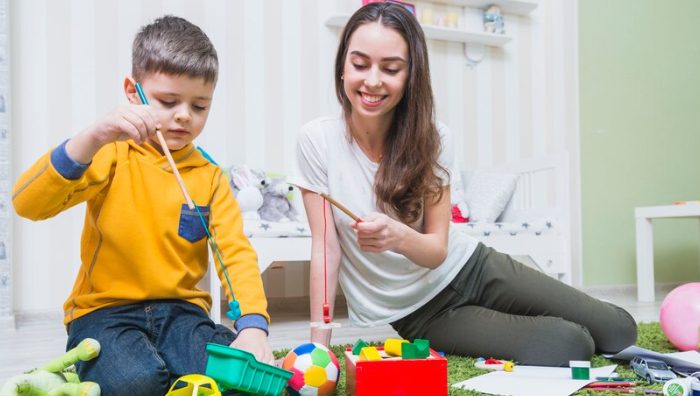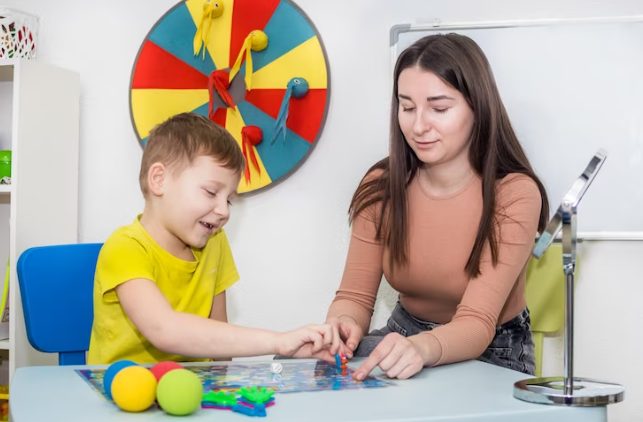
Sleep problems are a significant concern observed in children with autism spectrum disorder (ASD) and impact various aspects of their lives. These challenges may affect social interactions, daily routines, and academic performance, while also contributing to increased stress for parents.
Research indicates that approximately two-thirds of children with ASD experience chronic insomnia.
Children with autism may experience difficulty falling asleep or waking up in the middle of the night due to heightened sensitivity to external stimuli like touch or sound. Unlike most children who remain undisturbed when a door is opened, or the covers are adjusted, children with ASD may be light sleepers. Another study also discovered that children on the autism spectrum who struggle with sleep tend to be more hyperactive and easily distracted compared to those who sleep well.
In this regard, some of the most effective strategies to promote better sleep include sleep education, making changes in the sleeping environment, implementing behavioral interventions, and, in some cases, providing supplements prescribed by a professional, as well.
How Can I Help My Child with Autism Sleep Better?
Addressing sleep issues in children on the autism spectrum can be relatively simple; establishing a bedtime routine or modifying bedroom conditions, like adjusting temperature and lighting, can help a great deal. Consistently adhering to set bedtimes and wake times also helps regulate their body’s internal clock, making sleep more predictable and reliable. Besides, children with autism who get back on a regular sleeping schedule may be able to learn better, are less irritable, and demonstrate relatively fewer challenging behaviors.
On that note, let’s take a look at some simple and easily-implementable steps to ensure that your child gets a good night’s sleep –
- Comfortable Sleep Environment: Create a comfortable sleep environment with a cozy mattress, soft bedding, and suitable room temperature. You can also minimize noise and light disturbances to promote better sleep. However, remember to adjust the sleep setting in a way that is sensory-friendly, considering your child’s sensory preferences and sensitivities. Here, soft textures and weighted blankets can help provide a sense of comfort and ease.
- Consistent Bedtime Routine: As mentioned earlier, establishing a regular bedtime routine can play an essential role in improving your child’s sleep. The routine may include calming activities like reading or gentle music, which can help signal to your child that it’s time to relax, wind down, and sleep. Incorporating calming elements like a warm bath or soothing music into the pre-sleep routine can also help your child relax and prepare for sleep.
- Limit Screen Time: Reduce screen time before bedtime, as the blue light from screens can interfere with sleep. Moreover, your child can greatly benefit from establishing a no-screen rule at least an hour before bedtime. This practice can create a calming pre-sleep routine, allowing their mind to unwind and enhancing the quality of their sleep, as well. It’s also an opportunity for bonding through bedtime stories, quiet activities, or relaxing conversations, making bedtime a cherished part of your daily routine.
- Physical Activity: Encourage physical activity during the day, as it can help your child expend energy, making it easier for them to fall asleep at night. However, avoid vigorous exercise close to bedtime as it may lead to disturbed sleep patterns. Consider engaging in fun, low-impact activities like a calming pre-sleep yoga session or a leisurely evening walk together, setting the stage for a peaceful night’s rest.
- Diet Considerations: Be mindful of your child’s diet, especially in the evenings. Limit caffeine and sugary foods close to bedtime, and ensure they have a light, balanced dinner, while avoiding heavy or spicy foods that may cause discomfort. Creating a soothing evening mealtime routine can make this a pleasant family experience, allowing your child to associate dinner with relaxation and preparing for a restful night’s sleep. Remember, a well-nourished body is better prepared for a peaceful night of good, uninterrupted sleep!
- Limit Daytime Naps: While some children benefit from short naps, excessive daytime napping can interfere with nighttime sleep. Ensure that naps during the day are not too long or too close to bedtime. Instead, encourage daytime activities that engage your child and expend their energy, thus reducing the need for long naps.
- Communication: Establish a simple communication system with your child to understand their needs during the night. Use visuals or simple gestures to enable them to communicate their needs or discomfort, if any. This thoughtful approach can not only provide comfort but also foster a sense of independence and security in your child, making bedtime a more positive experience for parents and children alike.
These steps, tailored to your child’s specific needs, can help promote better sleep and improve their overall well-being. However, if sleep issues still persist, make sure that you consult your healthcare professional, since they can provide personalized guidance and solutions as per your little one’s unique requirements.
In our commitment to providing the best care for children with autism, we at Early Autism Services (EAS) understand the unique challenges and opportunities that each child presents. Our personalized and solution-oriented approach focuses on nurturing their strengths and fostering a safe and enriching environment. We believe that every child has immense potential, and our dedicated team of experts is here to guide them every step of the way.
To connect with one of our experienced clinicians, reach out to us via phone (+91 8929153820) or by filling out the form here. We look forward to assisting you, answering your inquiries, and scheduling a free consultation at your convenience!








Recent Comments